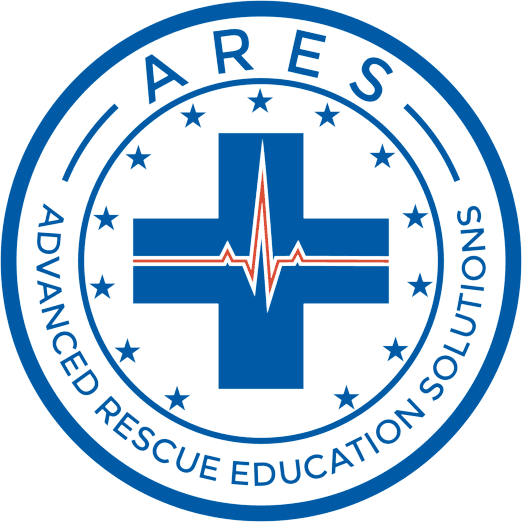Guide for Aspiring EMS Professionals at ARES
Step 1: Basic Life Support (BLS) Training and Certification
Before diving into the core EMS programs, you will start with Basic Life Support (BLS) training and certification.
What is BLS?
- Definition: BLS is a level of medical care used for victims of life threatening illnesses or injuries until they can be given full medical care at a hospital.
- Skills Covered: It includes skills such as CPR (Cardiopulmonary Resuscitation), AED (Automated External Defibrillator) use, and other basic first-aid techniques.
- Certification: Upon successful completion, you will receive a BLS certification, which is often a prerequisite for advanced EMS training.
Step 2: EMT Basic Program
After obtaining your BLS certification, the next step is to enroll in our EMT (Emergency Medical Technician) Basic program.
Overview of EMT Basic
- Objective: This program equips you with the knowledge and skills needed to provide emergency medical care at a basic life support level.
- Duration: The EMT Basic program typically lasts four months and begins every January and July.
- Clinical Rotations: Hands-on experience through clinical rotations is a critical component.
- Certification: After completion, you must pass the National Registry of EMTs certification exam to become a certified EMT.
Step 3: Advancing Your Training
Upon successful completion of the EMT Basic program, you can choose to advance your training with either the AEMT (Advanced Emergency Medical Technician) or Paramedic program.
Option 1: AEMT Program
- Scope: AEMTs have more advanced skills than EMTs but not as many as paramedics.
- Skills Enhanced: Intravenous therapy, use of advanced airway devices, and some medication administration.
- Duration: The AEMT program is shorter than the paramedic program, roughly the same length of time as EMT, but requires a valid EMT certification as a prerequisite.
Option 2: Paramedic Program
- Scope: This is the highest level of EMS pre-hospital training.
- Skills Mastered: Advanced patient assessment, a wide range of emergency procedures, and extensive pharmacological interventions.
- Duration: It is the longest and most comprehensive of the EMS training programs, often taking one to two years to complete. Additional Considerations
- Continuing Education: EMS is a dynamic field, and continuous learning is vital. Come back to ARES to receive your continuing education with an Alumni Discount!
- Networking and Experience: Engage in networking with professionals and seek opportunities for real-world experience. Consider joining our ARES Connect Discord server to connect with others in the field of Public Safety!


